Volume 49 Number 2 (2018.6)
Special Feature
Advanced Alloy Design and Processing of Metallic Materials for Weight- and Energy-saving of Automobiles
Part I. Special Feature
Overview
Research Reports
-
pages 1-8
Kouji Tanaka, Hajime Kato, Tadashi Oshima and Natsuki Sugiyama
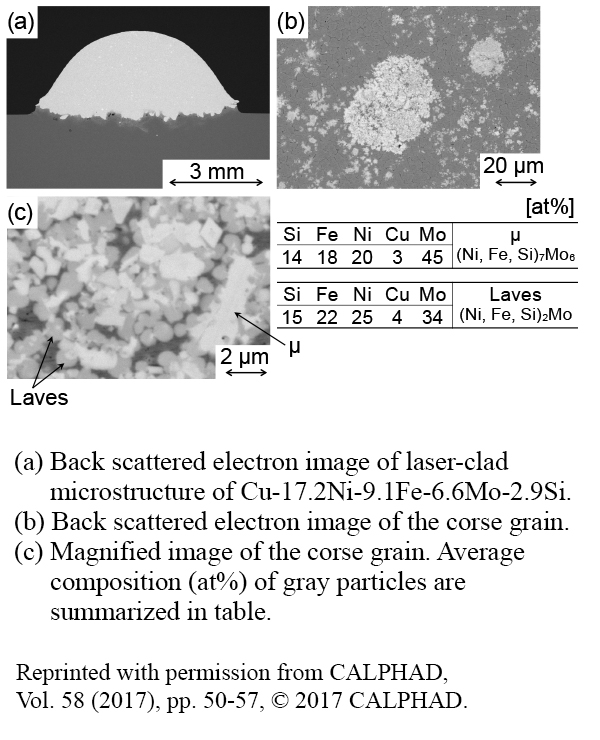
A new Cu-Ni-Fe-Mo-Si alloy has been applied to laser-clad valve seat formation. During the deposition process, the liquid immiscibility leads to separation of spherical liquids (L2), which solidify into coarse hard grains. Wear resistances were strongly dependent on grain dimension, which was controlled by the Ni/Mo content and calculated L2 fraction.
-
pages 9-14
Toshitake Miyake, Nobuhiko Matsumoto and Mikio Kondoh
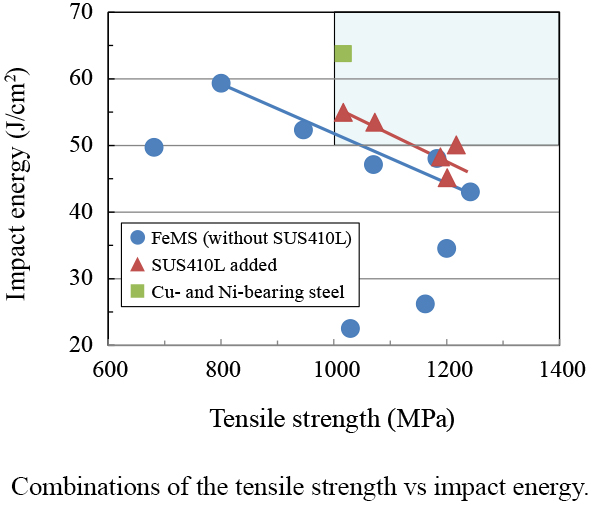
Cu- and Ni-free high-strength sintered steels with excellent impact energy were developed using FeMS powder (Fe-Mn-Si-C) and SUS410L powder as additives. These steels exhibited a dual-phase microstructure comprising bainite and island-shaped martensite, and an excellent combination of tensile strength and impact energy: over 1000 MPa and around 50 J/cm2, respectively.
-
4. Hot Stamping Process Design for Improvement of Formability
 (1245kB)
(1245kB)pages 15-23
Eiichi Ota, Yasuhiro Yogo, Takamichi Iwata and Noritoshi Iwata
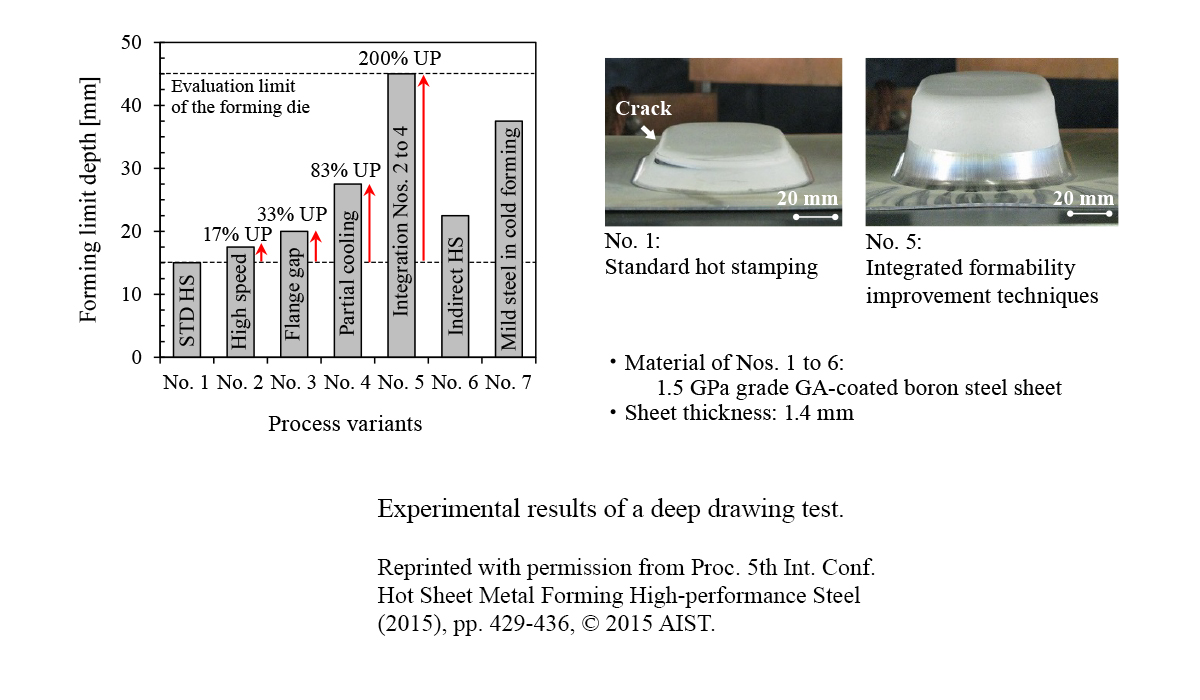
Formability in hot stamping is improved by controlling initial temperature distribution. The proposed process to control the temperature distribution achieved a three times deeper forming limit compared to the standard hot stamping process. To apply this process to a variety of product shapes, a procedure was developed for determining a suitable initial temperature distribution for hot deep drawing.
-
pages 25-33
Tadahiko Furuta, Izuru Miyazaki, Keiichiro Oh-ishi and Shigeru Kuramoto
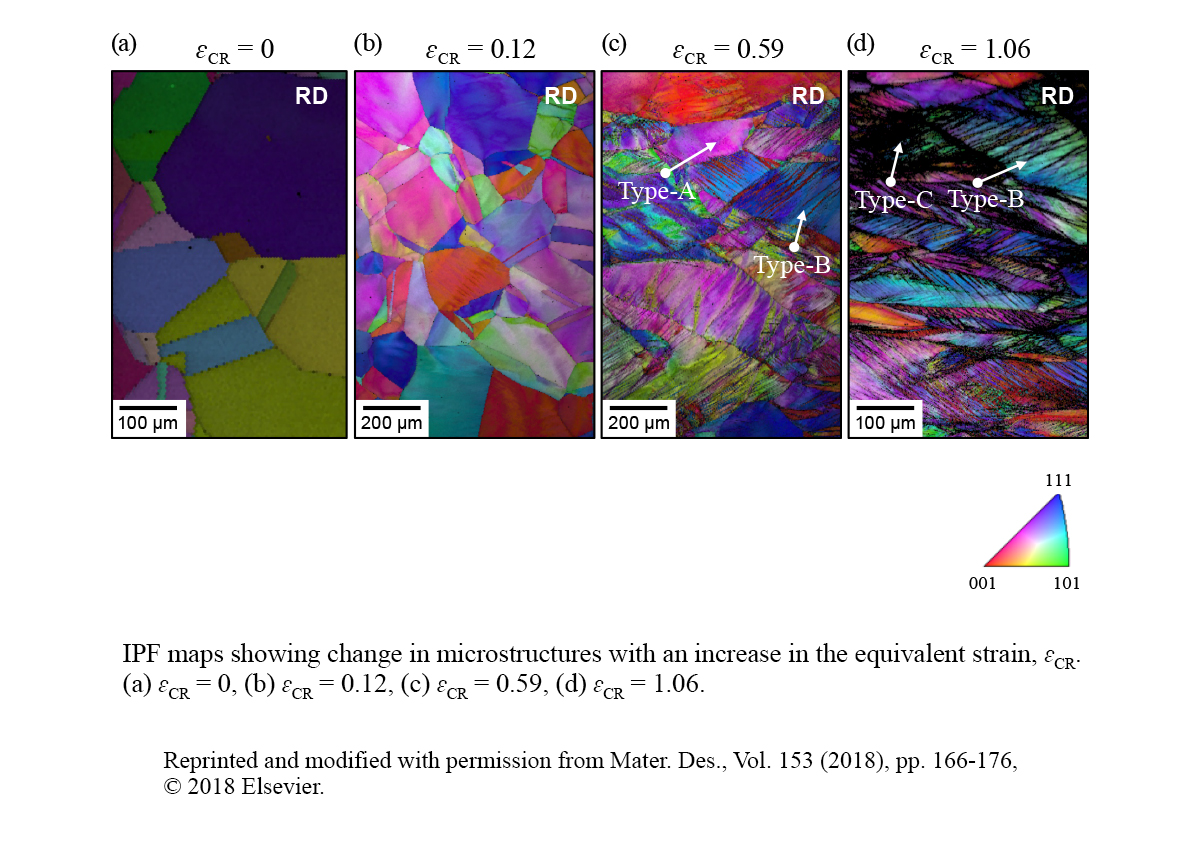
Microstructural changes during cold rolling and the following tensile test in the Fe-24%Ni-4%Al-0.45%C alloy were studied. The severely cold rolled sample showed the ultra-high yield strength of 1400 MPa and great ductility of 40%. Operation of multimodal deformation, such as dislocation glides, deformation twins and stress induced martensitic transformation, appeared to play an important role for formation of the heterogeneous microstructure and excellent combination of strength and ductility.
-
6. Improvement of Corrosion Resistance of Mg-9%Al Alloys Containing Copper by Zinc Addition
 (1816kB)
(1816kB)pages 35-41
Hiroyuki Kawabata
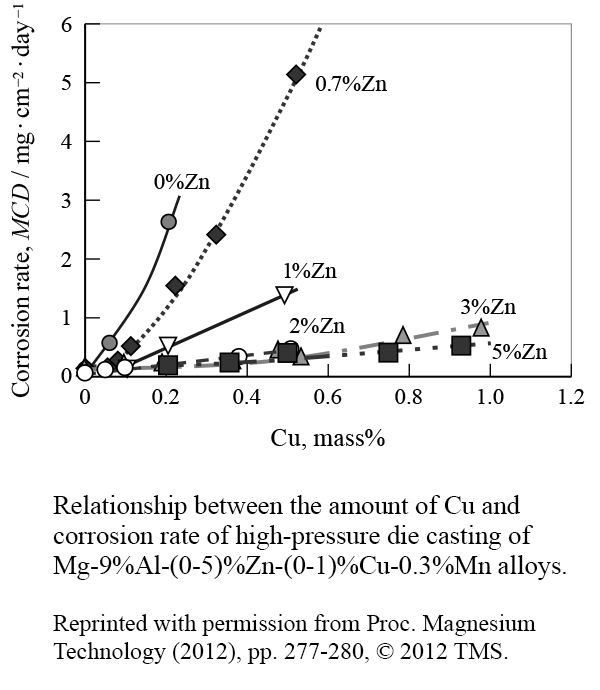
When recycling magnesium alloys, it is easy for copper contamination to occur, which can lead to a significant deterioration of corrosion resistance. In this study, an improvement in the corrosion resistance of AZ91 alloy containing copper by adding zinc is reported.
-
7. Effect of Ni Addition on the Interfacial Reaction Between Cu Lead Frame and Sn-Cu Solder
 (1874kB)
(1874kB)pages 43-49
Takashi Maeshima, Hideaki Ikehata and Shinji Mitao
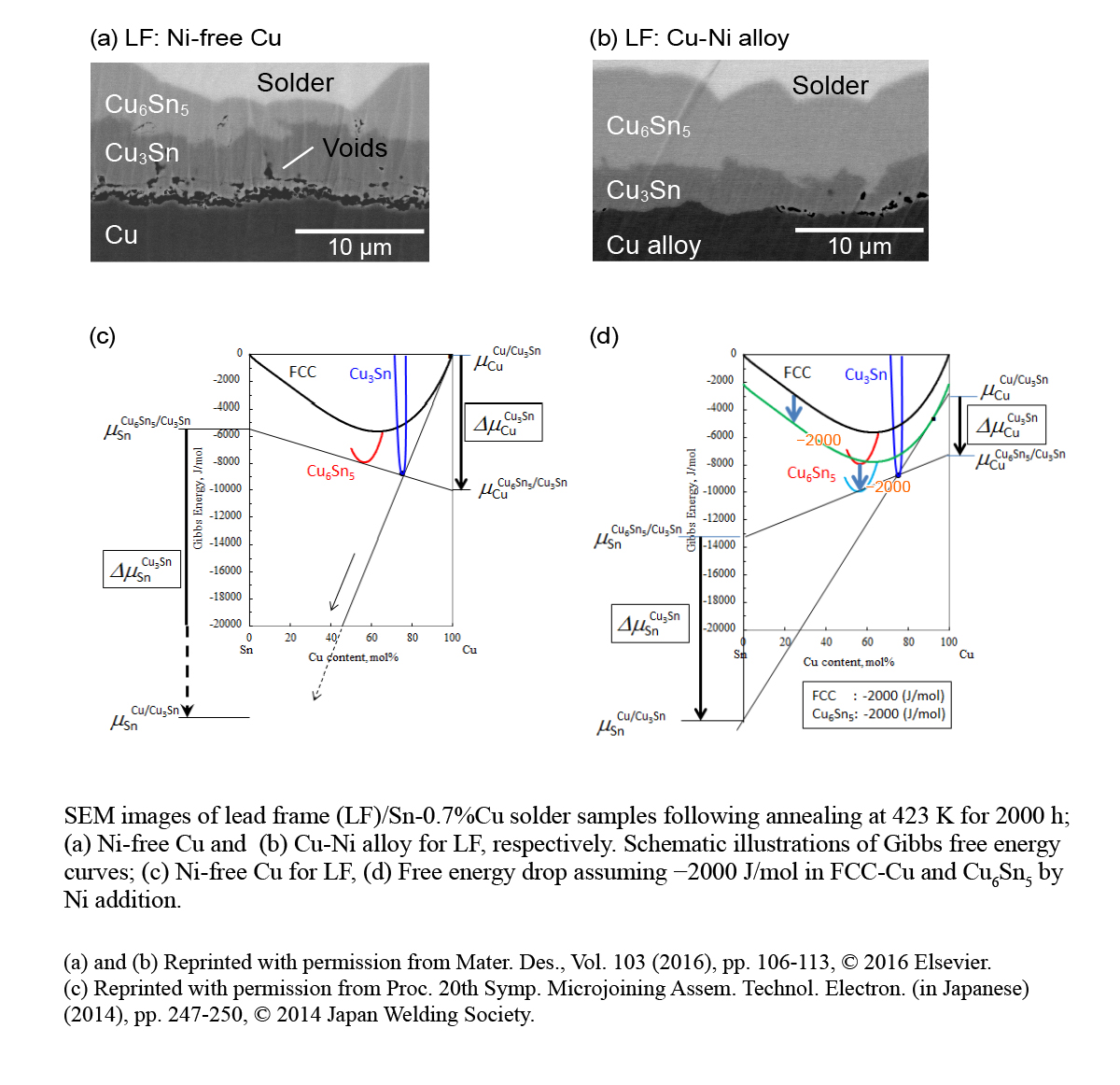
Formation of voids and intermetallic phases in the interfacial reaction layer between the Cu-base lead frame alloy and the Sn-base solder was studied. Both the formation of voids and growth of a Cu3Sn layer during exposures at elevated temperatures were suppressed by adding Ni to the lead frame alloy. The mechanism of this behavior was discussed in terms of microstructure, thermodynamics and kinetics of the reaction.
Part II.
Special Review
-
pages 51-64
Kazumasa Takatori
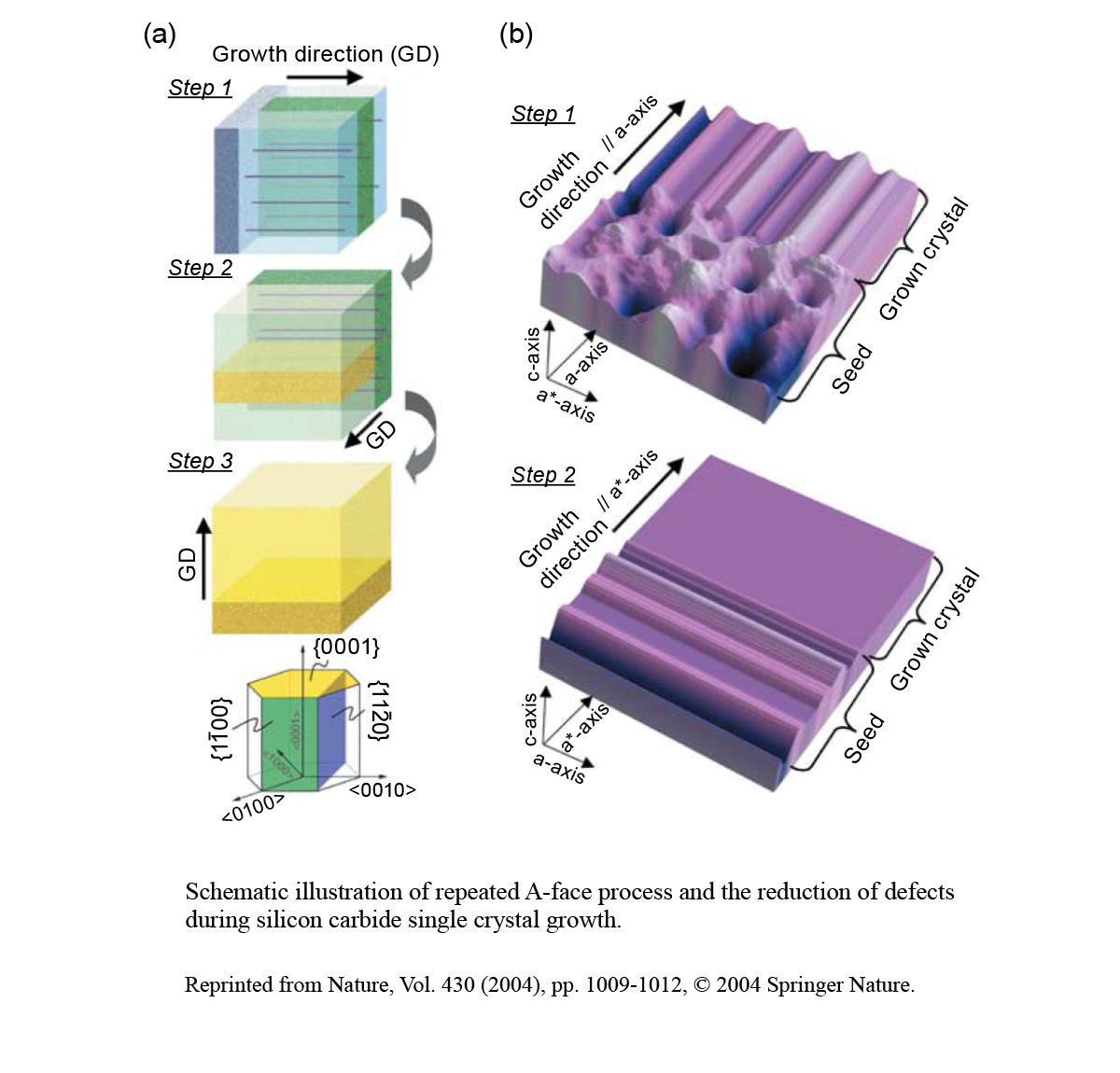
Ceramics-related activities at Toyota Central R&D Labs. Inc. were briefly reviewed: the developments of high-temperature structural ceramics, carbide coated steels by simple process, unique hybrid materials in the organic-inorganic boundary region, catalyst-support ceramic powders for emission control of combustion engines, visible light sensitized photocatalysts, ultrahigh-quality silicon carbide single crystals, and high performance lead-free piezoelectric ceramics, etc.
